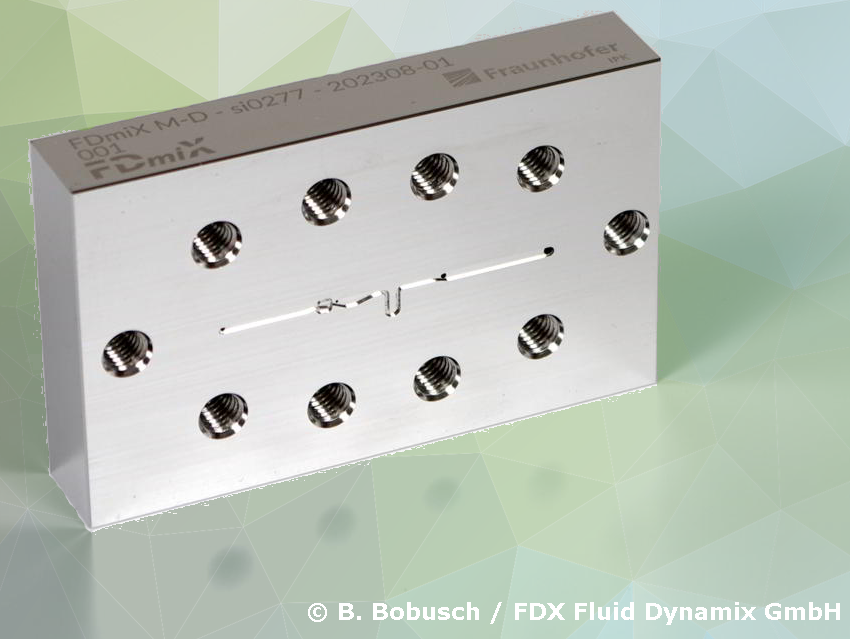Nucleic acid-based drugs, such as the COVID-19 mRNA vaccines, hold great promise for medical advances. To effectively deliver these active agents to the body’s cells, they must be encapsulated in nanoparticles. The nanoparticles are made using fluid mixing processes that require thorough and rapid mixing. So far, industrial mixers, such as T-mixers or Y-mixers, allow large-scale production but often compromise on mixing quality.
The Fraunhofer Institute for Production Systems and Design Technology IPK and FDX Fluid Dynamix have jointly developed FDmiX, a technology platform for the production of high-quality, stable nanoparticles. Lonza has licensed the technology for its Good Manufacturing Practices (GMP) production activities and is already using it. FDmiX, which stands for Fraunhofer Dynamic Mixing Technologies, uses the OsciJet nozzle developed by FDX Fluid Dynamix to quickly and efficiently produce consistent, homogeneous nanoparticles with high mixing quality.
Inside the nozzle, a jet of liquid is positioned on one side of the main chamber. A small portion of the jet is deflected into a side channel before leaving the nozzle. At the end of the side channel, it rejoins the main jet and pushes it to the other side. This causes the main jet to oscillate continuously from one side to the other at a high frequency. In this way, the jet of lipid solution oscillating through the nozzle meets the stream of the mRNA active ingredient at a perpendicular angle, creating a homogeneous mixture with nanoparticles of uniform size.
According to the companies, FDmiX produces smaller particles with a significantly narrower size distribution than a T-mixer at the same flow rate. In tests, the project partners produced nanoparticles about 10–20 % smaller than those produced with a T-mixer. They also had a significantly smaller size distribution and high encapsulation efficiency and particle integrity. The project partners developed and tested mixers for different pressures and flow rates. Encapsulation can occur at flow rates ranging from 5 mL/min to 1.5 L/min without affecting particle properties.
The technology’s precision and scalability, which allow for particle production across a range of flow rates, benefit various medical applications beyond vaccines, such as cardiology (for cardiac catheter coatings) and treatments for neurodegenerative diseases.
- FDX Fluid Dynamix GmbH, Berlin, Germany
- Fraunhofer Institute for Production Systems and Design Technology (IPK), Munich, Germany
- Lonza Group AG, Basel, Switzerland




